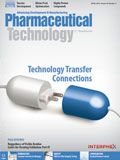FDA Insights on Quality in Solid Dosage Manufacturing
Pharmaceutical Technology spoke with FDA to get the agency’s insights on how the industry can ensure quality in solid and semi-solid dosage products.
In January 2015, FDA created the Office of Pharmaceutical Quality (OPQ) within the Center for Drug Evaluation and Research (CDER) to address challenges posed by the increasing globalization of the pharmaceutical industry as well as the industry’s increased use of contract manufacturers. OPQ’s goal is to make regulatory decisions based on science and to ensure that the industry is providing safe and effective pharmaceuticals.
“FDA is putting into practice solutions to integrate application review and inspection in a risk-based way. This provides an integrated quality assessment of applications and inspections for drugs,” says OPQ Director Michael Kopcha, PhD, RPh. Pharmaceutical Technology spoke with Kopcha to get the agency’s insights on how the industry can ensure quality in solid and semi-solid dosage products.
PharmTech: What is FDA looking for from companies to assure the agency that the company is following GMPs and producing quality products?
Kopcha (FDA): Some of the key things FDA is looking for include a commitment from management regarding the implementation of ICH Q10 [International Conference on Harmonization Q10 Pharmaceutical Quality System] principles within its pharmaceutical quality system. We also look for commitment of adequate resources and oversight into critical elements, such as knowledge management, and systematic attention to quality assurance principles: sound design, robust maintenance, and diligence in assuring the process and control strategy are followed, along with developing quality metrics, monitoring of product and process quality, and robust product reviews. Robust product reviews, which are required at least annually under 21 Code of Federal Regulations (CFR) 211.180(e), will include assessments of trends in control charts and other production information, as well as compilation and assessment of other quality indicators including stability data, complaints, and failures to determine whether the process remains stable and capable of making a quality pharmaceutical. Furthermore, we are gratified when we see manufacturers go above and beyond the minimum requirements in the CGMP regulations by continuously monitoring key production and process control parameters, which are part of ICH Q10 and continued process verification as found in the process validation guidance.
PharmTech: Are the regulations for ensuring product quality different for solid dosage forms and semi-solid dosage forms? If yes, what are the differences?
Kopcha (FDA): There are regulations regarding the content and format of an abbreviated new drug application (ANDA) (21 CFR Section 314.94) that identify different types of information, including bioequivalence, for submission depending on product type. These regulations also provide information on the changes to inactive ingredients permitted in drug products intended for topical use.
There also are product-specific guidance documents available to address bioequivalence (and in some cases, chemistry, manufacturing, and controls [CMC] considerations) in keeping with these regulations for different products.
Additionally, there are several relevant FDA guidance documents that address these dosage forms [such as]:
- Nonsterile Semisolid Dosage Forms, Scale-Up and Postapproval Changes: Chemistry, Manufacturing, and Controls; In Vitro Release Testing and In Vivo Bioequivalence Documentation (e.g., SUPAC-SS)
- Immediate Release Solid Oral Dosage Forms, Scale-Up and Postapproval Changes: Chemistry, Manufacturing, and Controls; In Vitro Dissolution Testing, In Vivo Bioequivalence Document (e.g., SUPAC-IR)
- Modified Release Solid Oral Dosage Forms, Scale-Up and Postapproval Changes: Chemistry, Manufacturing, and Controls; In Vitro Dissolution Testing, In Vivo Bioequivalence Document (e.g., SUPAC-MR)
- SUPAC Manufacturing Equipment Addendum.
PharmTech: Is FDA seeing any new trends or techniques developing in the way companies are testing their products’ quality and/or maintaining that quality?
Kopcha (FDA): FDA is seeing new trends in the way companies are testing and maintaining product quality. These include trends toward use of continuous manufacturing and real-time release approaches that use process analytical technology including online monitoring. For instance, in July 2015, FDA approved the first application using continuous manufacturing for Orkambi, a product to treat cystic fibrosis, after much in-depth work to evaluate the unique manufacturing processes involved for this solid dosage form. To further encourage appropriate advanced technology, FDA released a guidance entitled Advancement of Emerging Technology Applications to Modernize the Pharmaceutical Manufacturing Base, which outlines how CDER’s Emerging Technology Team (ETT) is working with companies to facilitate understanding and review of new manufacturing technology. We are performing site visits (in which manufacturing facilities invite FDA staff for an educational visit) to better understand this new technology and how to appropriately regulate it. Continuous manufacturing naturally lends itself to online monitoring and real-time monitoring that may contribute to the manufacture of consistent quality products.
Article DetailsPharmaceutical Technology
Vol. 40, No. 4
Page: 60
Citation: When referring to this article, please site as S. Haigney, "FDA Insights on Quality in Solid Dosage Manufacturing," Sidebar to S. Haigney, "Ensuring Quality in
Solid and Semi-Solid Dosage Forms," Pharmaceutical Technology40 (4) 2016.
